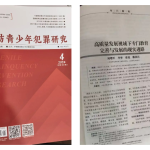In today's rapidly evolving competitive landscape, the concepts of symbols and identity play a pivotal role in shaping how individuals and groups engage, motivate, and distinguish themselves. From sports arenas to digital gaming worlds, these elements influence not only participation but also the perception and social dynamics surrounding competition.
Understanding the interplay between symbols, identity, and competition offers valuable insights into human behavior and societal values. This article explores how symbols serve as markers of belonging and distinction, how identities are constructed within competitive environments, and the broader implications of these processes in modern society.
Table of Contents
- Understanding Symbols and Identity in Modern Competition
- The Role of Symbols in Shaping Competitive Identities
- Identity Construction in Competitive Environments
- Modern Systems of Competition: Bounty and Reward Mechanics
- The Psychological and Social Functions of Symbols in Competition
- Case Studies of Symbols and Identity in Popular Media and Gaming
- The Dual Edges of Symbolic Identity in Competition
- Future Trends: Symbols and Identity in Digital and Globalized Competition
- Conclusion: Harnessing Symbols and Identity for Constructive Competition
Understanding Symbols and Identity in Modern Competition
At its core, symbols are visual or conceptual markers that convey meaning, allegiance, or status. They can be as simple as a logo, a color, or an emblem, or as complex as a narrative or myth that encapsulates group values. Identity refers to the self-perception and social identity individuals or groups develop, often shaped by symbolic markers. Competition is the context in which these elements interact—whether in sports, gaming, or social struggles—serving as a stage for displaying and reinforcing identities.
Culturally and socially, symbols embed shared histories, beliefs, and aspirations. For example, national flags or team logos evoke collective pride and foster unity during international contests. Such symbols influence not only how participants perceive themselves but also how audiences interpret their actions, creating a layered dynamic of meaning and motivation.
Moreover, identity shapes participation—players align themselves with certain symbols to signal their allegiance or to differentiate themselves from rivals. This process influences perceptions, often contributing to heightened loyalty, rivalry, or even conflict. As competition becomes more globalized and digital, these symbolic associations gain increased importance, transcending physical boundaries.
The Role of Symbols in Shaping Competitive Identities
Symbols act as tangible markers of group belonging and individual distinction. In sports, team jerseys, mascots, and colors instantly communicate allegiance. For example, the iconic Olympic rings symbolize unity and excellence across diverse nations, fostering a shared identity among athletes and spectators alike.
In gaming and entertainment, symbols often serve as badges of achievement or status. Consider the use of emblems, insignias, or weapon icons that denote rank or affiliation. These symbols motivate players to improve and foster loyalty to particular factions or communities. Such markers can deepen engagement and encourage rivalry, as seen in multiplayer online games where faction symbols become central to identity and strategy.
Impact studies suggest that symbols significantly influence motivation and loyalty. A well-designed symbol can evoke emotional attachment, intensify group cohesion, and even create a sense of rivalry that fuels competitive spirit. For instance, fans rally behind team logos that embody their values, creating in-group/out-group dynamics that escalate competitive fervor.
Identity Construction in Competitive Environments
Personal and collective identities evolve through participation in competition. Personal identity involves individual skills, narratives, and aspirations, while collective identity pertains to group membership, shared values, and myth-making. Narrative and myth are powerful tools in establishing and reinforcing these identities, often transforming participants into symbols of resilience or independence.
A compelling example is the portrayal of frontier towns in media, such as Netflix’s "Godless". The rugged towns symbolize resilience, independence, and defiance against adversity. These narratives elevate local communities into symbols that inspire participants and viewers alike, shaping perceptions of strength and perseverance.
Such stories foster a sense of purpose and identity that transcends individual effort, linking personal achievement to broader cultural myths. This collective myth-making enhances motivation, loyalty, and the willingness to endure hardships in pursuit of shared ideals.
Modern Systems of Competition: Bounty and Reward Mechanics
Modern competitive systems often incorporate bounty and reward mechanics to motivate participation and reinforce identities. These systems assign tangible or symbolic rewards for achieving specific goals, creating a structured environment where symbols and identities are central to engagement.
For example, in multiplayer online games like "Dark Brotherhood" in Elder Scrolls Online, bounties serve as targets that players pursue, often linked with faction or guild identities. Such mechanics reinforce group cohesion and individual motivation, as players see themselves as part of a larger narrative or community.
Similarly, the contemporary bounty system exemplified by "Bullets And Bounty" demonstrates how reward structures can create a modern, engaging competitive environment. The "Spade symbol payout" illustrates how symbols are integrated into reward mechanics to deepen the connection between identity and achievement, fostering loyalty and rivalry among participants.
The Psychological and Social Functions of Symbols in Competition
Symbols influence not only individual behavior but also group strategies. They serve as rallying points, shaping perceptions of success and failure, and guiding competitive tactics. For example, a team’s emblem can boost morale and unify players, while also intimidating opponents.
At the social level, symbols foster community building, creating a sense of belonging among members. This cohesion is essential for maintaining motivation and ensuring sustained participation.
"Symbols act as social glue, binding individuals into cohesive groups, and as signals of status that can escalate rivalry or conflict." — Social Dynamics Research
However, symbols can also create in-group/out-group dynamics, sometimes escalating rivalry to conflict. Recognizing and managing this duality is critical for fostering healthy competition.
Case Studies of Symbols and Identity in Popular Media and Gaming
In media such as "Godless", frontier symbolism encapsulates independence and resilience, turning local histories into powerful narratives that resonate with contemporary audiences. These symbols reinforce societal themes of strength and perseverance.
In gaming, bounty systems like those in Dishonored and Elder Scrolls Online serve to reinforce player identity, fostering engagement through structured rewards and faction allegiances. These mechanics mirror societal themes of loyalty, honor, and rivalry, reflecting broader cultural values.
Such examples demonstrate how symbols in media and gaming are not mere decorations but active elements that shape societal perceptions and individual identities, emphasizing qualities such as independence, strength, and resilience.
The Dual Edges of Symbolic Identity in Competition
While symbols can foster positive community spirit and motivation, they also have a darker side. Excessive reliance on symbols can lead to exclusion, fanaticism, or conflict. For example, overly rigid symbols may alienate outsiders or incite rivalry that escalates into hostility.
Responsible use of symbols involves promoting inclusivity and respect, ensuring they serve as unifiers rather than divisive markers. Creating shared symbols that encompass diverse groups can help cultivate a healthy competitive environment.
"Symbols wield power—they can inspire unity or ignite division. Responsible stewardship is essential for fostering constructive competition." — Cultural Analyst
Future Trends: Symbols and Identity in Digital and Globalized Competition
As virtual environments and e-sports continue to grow, the role of symbols and identity becomes even more significant. Digital avatars, badges, and virtual trophies serve as symbols of achievement and belonging in online communities.
Cross-cultural influences are also shaping the evolution of symbols. Globalized platforms facilitate the sharing and blending of symbols, creating hybrid identities that transcend traditional boundaries.
Emerging bounty systems, such as those integrated into decentralized gaming platforms or blockchain-based rewards, demonstrate potential for novel symbols of achievement and status. These innovations suggest a future where symbols and identity are more fluid, personalized, and globally interconnected.
Conclusion: Harnessing Symbols and Identity for Constructive Competition
Symbols and identity remain fundamental to the fabric of modern competition. They influence motivation, foster community, and reflect societal values. When used responsibly, they can enhance engagement and promote positive rivalry; when misused, they risk division and conflict.
Organizers, participants, and media creators should understand the power of symbols to shape the character of competition. By fostering inclusive, meaningful symbols, it is possible to cultivate a healthy, vibrant competitive environment that celebrates resilience, strength, and shared purpose.
As society continues to globalize and digitalize, the importance of symbols and identity will only grow. Embracing their potential responsibly can help ensure that modern competition remains a force for unity and progress rather than division.


.png)


















